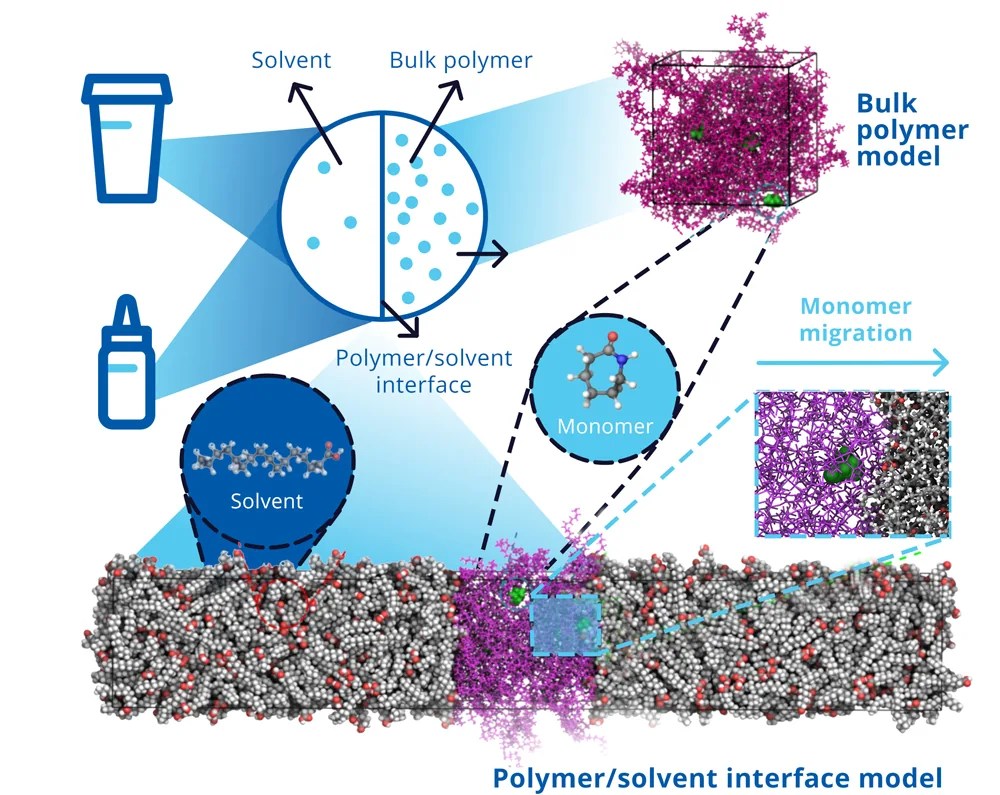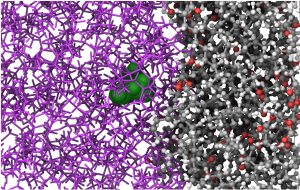Designing better packaging materials with a reduced risk of contamination and longer shelf-life using molecular simulations
Molecular dynamics simulation of plastic contaminant migration in packaging materials and potential leaching into model food fluids
Executive Summary
- Built and validated a molecular model that can predict bulk and interfacial penetrant diffusion, as well as enable an understanding of the underlying mechanisms governing these processes
- Established a modeling procedure to successfully carry out the challenging simulations of migration processes within and from polymer phases
- Gained valuable insights to complement and rationalize labor- and time-intensive penetrant migration experiments for product developers, regulatory agencies, and manufacturers

of penetrant diffusion in polymeric systems.
Approach
In Mileo et al., Schrödinger scientists employed molecular dynamics (MD) simulation using the Schrödinger Materials Science Suite, Desmond MD engine and the OPLS4 force field. The goal of this work was to analyze the transport of monomers in three commercially important, recyclable polymers: polyamide-6 (PA 6), polycarbonate (PC), and poly(methyl-methacrylate) (PMMA). To achieve this, scientists performed the following steps:
- Validated bulk polymeric models with respect to properties derived from experimental work
- Verified the predictability of the modeling strategy in reproducing the experimental monomer migration tendencies by employing different solvents to simulate foodstuff
- Predicted the monomer migration mechanism in two typical components employed in the food industry (palmitic acid and capric triglyceride)
Conclusion
This work demonstrates how molecular-scale insights can aid the design of safe and functional polymer/formulation interfaces in industry-relevant consumer goods. The methods presented can also be leveraged to understand the risk of contaminants leaching into food or other consumer products, alongside understanding how the product itself can impact the rate of contamination at a barrier interface.

Publications
-
Nanoscale Simulation of Plastic Contaminants Migration in Packaging Materials and Potential Leaching into Model Food Fluids
Mileo PG, et al. Langmuir 2024, 40, 24, 12475–12487
Software and services to meet your organizational needs
Software Platform
Deploy digital materials discovery workflows with a comprehensive and user-friendly platform grounded in physics-based molecular modeling, machine learning, and team collaboration.
Modeling Services
Leverage Schrödinger’s expert computational scientists to assist at key stages in your materials discovery and development process.
Support & Training
Access expert support, educational materials, and training resources designed for both novice and experienced users.